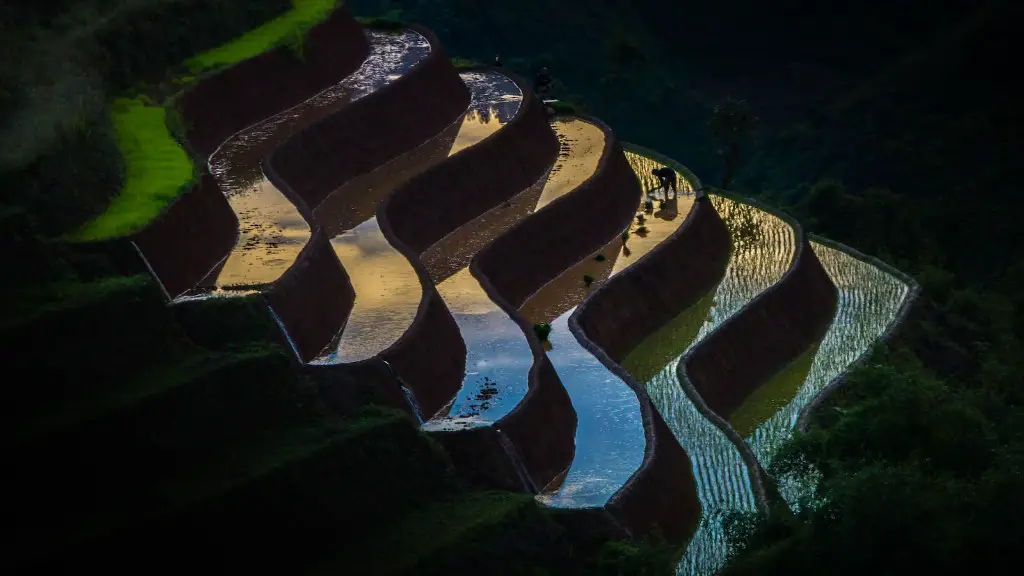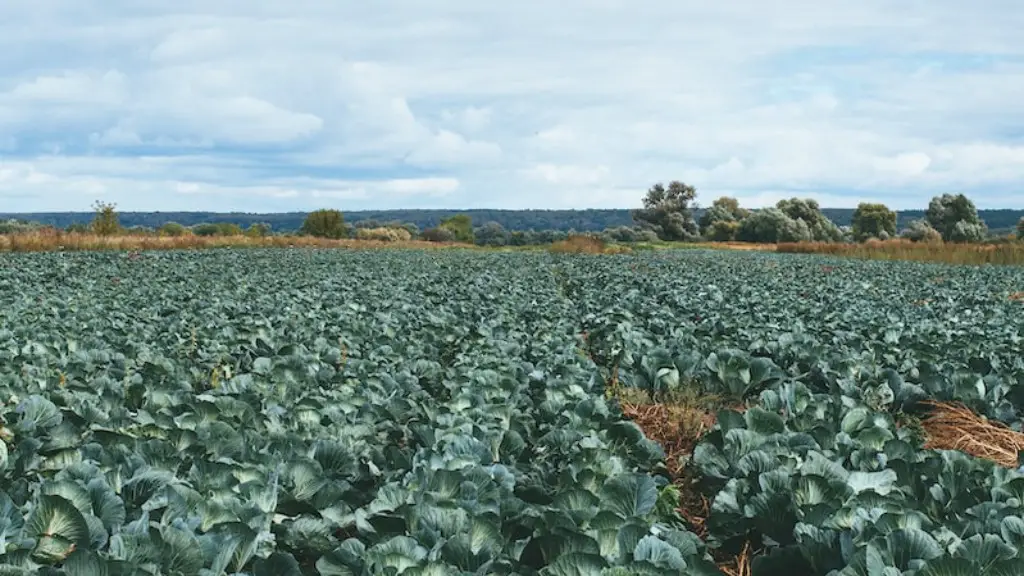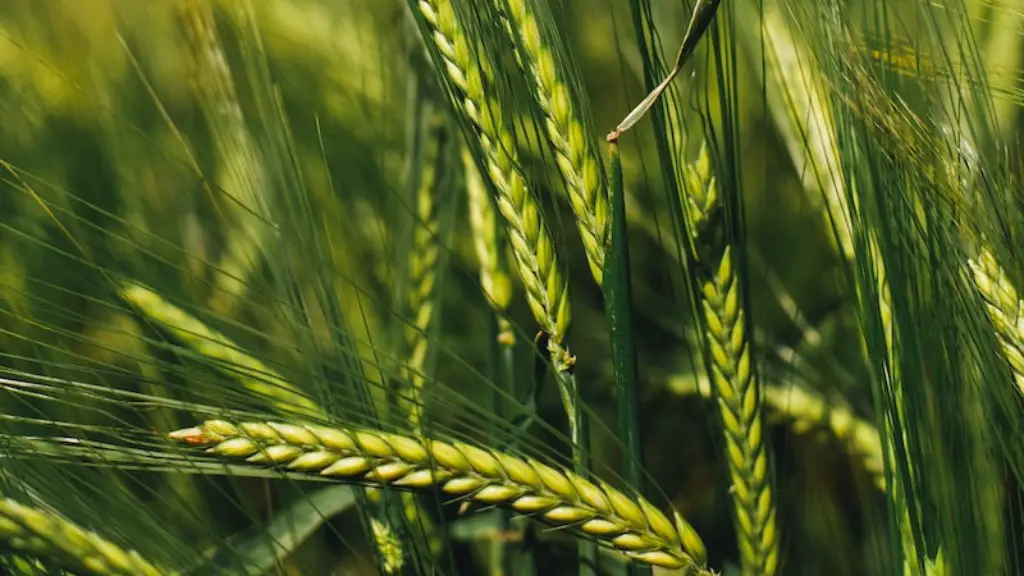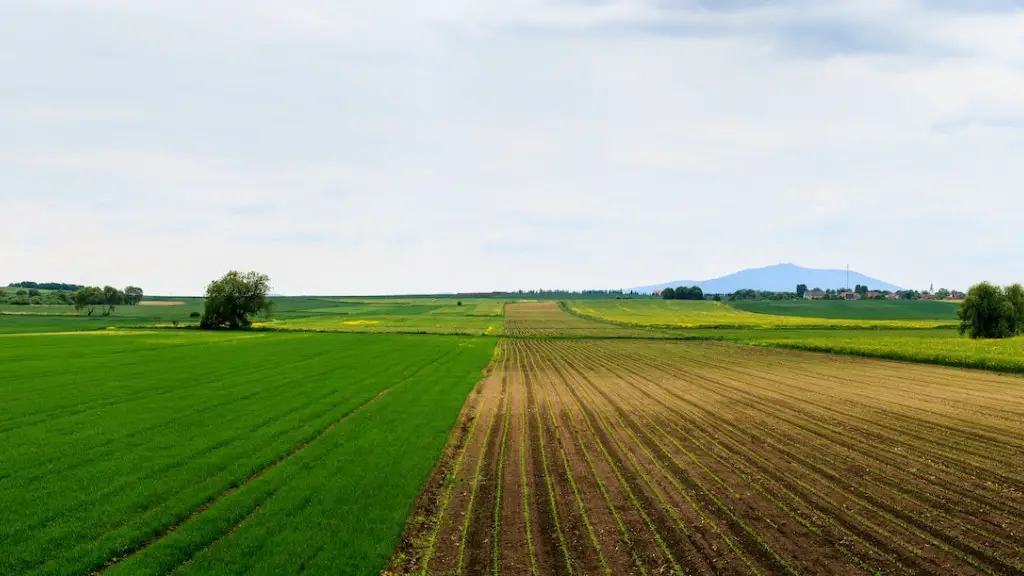The process of agriculture is a significant contributor to greenhouse gas emissions. Agriculture is responsible for about 10% of global greenhouse gas emissions, making it a significant contributor to climate change. The majority of these emissions come from livestock production, particularly enteric fermentation and manure management. Additionally, rice production, deforestation, and land use changes associated with agriculture also contribute to greenhouse gas emissions.
The main ways that agriculture causes global warming are through emissions of greenhouse gases like methane and carbon dioxide, and through land-use change.
How does agricultural cause global warming?
Agriculture is a significant contributor to climate change. Farming, in particular, releases significant amounts of methane and nitrous oxide, two powerful greenhouse gases. Methane is produced by livestock during digestion due to enteric fermentation and is released via belches. Nitrous oxide is produced by soil bacteria and released when soils are tilled. Both of these gases contribute to the greenhouse effect and contribute to climate change.
The global food system is responsible for a large percentage of annual emissions, as commonly reported using the 100-year Global Warming Potential. This means that the food system has a large impact on climate change. There are a number of ways to reduce the impact of the food system on climate change, such as reducing food waste, increasing efficiency in food production, and shifting to more sustainable diets.
How does agriculture affect the environment
Agriculture is the leading source of pollution in many countries. Pesticides, fertilizers and other toxic farm chemicals can poison fresh water, marine ecosystems, air and soil. They also can remain in the environment for generations.
Toxic chemicals used in agriculture can enter the environment through a variety of pathways. They can be released into the air as emissions from factories that produce them or from the fields where they are applied. They can leach into groundwater or runoff into surface water, and they can be carried by wind or water to other areas.
Some of the most common agricultural pollutants include pesticides, herbicides, fertilizers, manure and animal waste. These chemicals can have a range of harmful effects on human health, including cancer, reproductive problems, neurological damage and endocrine disruption. They also can harm wildlife and ecosystems.
One of the major contributors to climate change is factory farming, which releases vast quantities of greenhouse gases into the atmosphere.
Factory farming is a major driver of climate change, as it emits large amounts of carbon dioxide and methane. These gases trap heat in the atmosphere, causing the Earth’s temperature to rise.
The impact of factory farming on the environment is huge. It is one of the leading causes of deforestation, as trees are cleared to make way for pastureland. This destroys natural habitats and increases greenhouse gas emissions.
Factory farming also uses huge amounts of water and produces large amounts of waste. The waste from factory farms pollutes the air, water and soil, and contributes to climate change.
There are many things we can do to reduce the impact of factory farming on the environment. We can support farmers who are using sustainable practices, and we can demand that the government regulates factory farms more strictly. We can also reduce our own consumption of meat and dairy products.
Every little bit helps, and we need to act now to protect our planet from the damaging effects of climate change.
Why is agriculture bad for climate change?
Agriculture is a major contributor to greenhouse gas emissions, accounting for an estimated 25% of annual emissions. The main sources of agricultural emissions are from food production and land-use changes associated with farming, such as clearing vegetation and plowing. Agriculture is a significant contributor to climate change and it is important to take steps to reduce emissions from this sector.
Agriculture is a major source of greenhouse gas emissions, which contribute to global warming and climate change. Agricultural activities release greenhouse gases into the atmosphere, including carbon dioxide, methane, and nitrous oxide. These gases trap heat and contribute to the greenhouse effect, which causes the Earth’s atmosphere to warm. Climate change is a result of the Earth’s atmosphere becoming warmer over time. This can lead to more extreme weather conditions, including more frequent and more intense hurricanes, floods, and droughts. Agriculture contributes to climate change both through the emissions produced by agricultural activities and through the clearing of land for farming. Deforestation releases greenhouse gases into the atmosphere and also reduces the amount of land available to absorb carbon dioxide. Agriculture is a significant contributor to climate change and its effects are expected to increase in the future.
What is the negative impact of agriculture?
Agriculture has a huge impact on the environment – both positive and negative. On the one hand, agriculture can help mitigate climate change by sequestering carbon in the soil. On the other hand, unsustainable agricultural practices can contribute to climate change, by causing deforestation and releasing greenhouse gases. Agriculture can also cause water pollution and lead to biodiversity loss.
With the world’s population expected to reach 9 billion by 2050, the demand for food will only increase. It is therefore essential that we find ways to produce food sustainably, without damaging the environment.
While the development of agriculture can have positive effects on the natural life, oxygen production and climate in a region, it can also lead to negative impacts such as inorganic nitrate pollution, pesticide pollution and salinity problems. These problems are especially common in regions where agriculture is conducted intensively.
What is the relationship between climate and agriculture
Climate change affects agriculture in a number of ways; including through changes in average temperatures, rainfall and climate extremes with an important impact on soil erosion (ie floods, drought, etc): changes in pests and diseases, changes in atmospheric carbon dioxide, changes in the nutritional quality of some
Fossil fuels are the largest contributors to climate change and it is important to take steps to reduce our reliance on them. There are many things we can do to reduce our use of fossil fuels, such as using renewable energy, energy efficiency and conservation. We need to act now to reduce our emissions and leave a cleaner, healthier planet for future generations.
What are the 3 worst causes of climate change?
It is evident that greenhouse gas concentrations have increased significantly in the earth’s atmosphere over the last 800,000 years. This rise in greenhouse gas emissions has resulted in an increased greenhouse effect, which in turn has caused the earth’s surface temperature to rise. It is clear that this is a cause and effect relationship, and it is important to take action in order to reduce greenhouse gas emissions and slow down the effects of climate change.
Farming allowed for the domestication of plants and animals, which led to the formation of civilizations and deep class divisions. Hunter-gatherers had little or no stored food, and no concentrated food sources, like an orchard or a herd of cows. They lived off the wild plants and animals they obtained each day. This way of life was less reliable and more difficult than farming, and it left little room for the development of complex social structures.
What are the 5 major consequences of agriculture
Soil fertility loss, eutrophication of water bodies, deforestation, climate change and pesticide pollution are all environmental effects of agriculture. Soil fertility loss occurs when nutrients are removed from the soil faster than they can be replaced. This can lead to lower crop yields and poorer quality food. Eutrophication of water bodies occurs when nutrients from agricultural runoff enter waterways and stimulate the growth of aquatic plants and algae. This can lead to oxygen depletion and fish kills. Deforestation occurs when trees are cleared to make way for farmland. This can lead to habitat loss and soil erosion. Climate change occurs when greenhouse gases are released into the atmosphere, trapping heat and causing global temperatures to rise. This can lead to droughts, floods, and other extreme weather events. Pesticide pollution occurs when pesticides used in agriculture contaminate air, water, and soil. This can lead to health problems in humans and animals.
These two problems are linked together – as agricultural land is lost, the variety of crops and livestock produced decreases. This is a major problem for farmers and for the food security of the world.
There are a number of reasons for the loss of agricultural land. One is climate change – as the climate changes, it becomes more difficult to grow crops in certain areas. Another is the conversion of agricultural land to other uses, such as housing or industry. This is a particular problem in countries where the population is growing rapidly.
The decrease in the variety of crops and livestock produced is also a major problem. This is because it leads to a decrease in the genetic diversity of the food supply. This makes the food supply less resilient to disease and pests, and also means that there is less variety for people to eat.
These two problems are both major challenges for the future of agriculture. It is essential that we find ways to stop the loss of agricultural land and to increase the diversity of crops and livestock produced.
What are the major problems in agriculture?
Climate change, deforestation, landlessness, lack of integration, land fragmentation, land degradation, and urbanization are all major challenges facing the world today. Unless these issues are addressed soon, they will continue to have a negative impact on the environment and human societies.
Currently, agriculture accounts for about 11 percent of US emissions, and of that, 36 percent comes from the raising, feeding, and management of livestock. In order to reduce these emissions, we need to Find ways to reduce methane emissions from livestock and manure, which can be achieved through a variety of methods including:
-Improving livestock diets to reduce methane emissions
-Improving manure management practices
-Using anaerobic digestion to capture methane emissions from manure
-Using renewable energy sources to power agricultural operations
Conclusion
Agriculture is a significant contributor to global warming. Methane and nitrous oxide, which are both emitted from agricultural activities, are two of the most potent greenhouse gases. In addition, the clearing of land for agriculture is a major source of carbon dioxide emissions.
Agriculture is a significant contributor to global warming. The sector emits greenhouse gases through activities such as deforestation, livestock production, and the use of fossil fuels. These emissions contribute to climate change, which in turn affects agricultural productivity and damages crops. The impact of agriculture on global warming is an important issue that needs to be addressed in order to protect our food supply and safeguard our planet.





